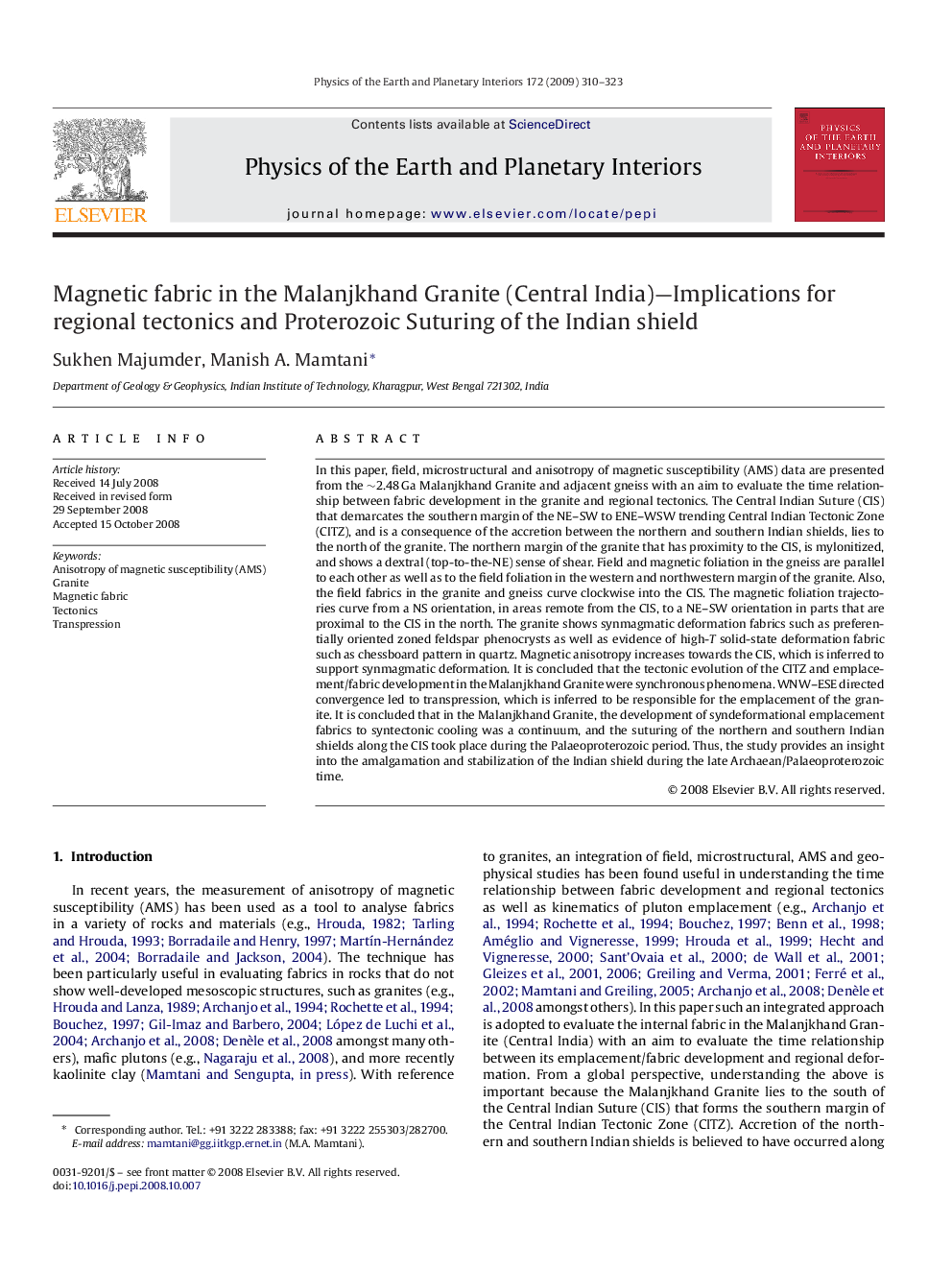| کد مقاله | کد نشریه | سال انتشار | مقاله انگلیسی | نسخه تمام متن |
|---|---|---|---|---|
| 4742367 | 1641573 | 2009 | 14 صفحه PDF | دانلود رایگان |
عنوان انگلیسی مقاله ISI
Magnetic fabric in the Malanjkhand Granite (Central India)-Implications for regional tectonics and Proterozoic Suturing of the Indian shield
دانلود مقاله + سفارش ترجمه
دانلود مقاله ISI انگلیسی
رایگان برای ایرانیان
کلمات کلیدی
موضوعات مرتبط
مهندسی و علوم پایه
علوم زمین و سیارات
فیزیک زمین (ژئو فیزیک)
پیش نمایش صفحه اول مقاله

چکیده انگلیسی
In this paper, field, microstructural and anisotropy of magnetic susceptibility (AMS) data are presented from the â¼2.48Â Ga Malanjkhand Granite and adjacent gneiss with an aim to evaluate the time relationship between fabric development in the granite and regional tectonics. The Central Indian Suture (CIS) that demarcates the southern margin of the NE-SW to ENE-WSW trending Central Indian Tectonic Zone (CITZ), and is a consequence of the accretion between the northern and southern Indian shields, lies to the north of the granite. The northern margin of the granite that has proximity to the CIS, is mylonitized, and shows a dextral (top-to-the-NE) sense of shear. Field and magnetic foliation in the gneiss are parallel to each other as well as to the field foliation in the western and northwestern margin of the granite. Also, the field fabrics in the granite and gneiss curve clockwise into the CIS. The magnetic foliation trajectories curve from a NS orientation, in areas remote from the CIS, to a NE-SW orientation in parts that are proximal to the CIS in the north. The granite shows synmagmatic deformation fabrics such as preferentially oriented zoned feldspar phenocrysts as well as evidence of high-T solid-state deformation fabric such as chessboard pattern in quartz. Magnetic anisotropy increases towards the CIS, which is inferred to support synmagmatic deformation. It is concluded that the tectonic evolution of the CITZ and emplacement/fabric development in the Malanjkhand Granite were synchronous phenomena. WNW-ESE directed convergence led to transpression, which is inferred to be responsible for the emplacement of the granite. It is concluded that in the Malanjkhand Granite, the development of syndeformational emplacement fabrics to syntectonic cooling was a continuum, and the suturing of the northern and southern Indian shields along the CIS took place during the Palaeoproterozoic period. Thus, the study provides an insight into the amalgamation and stabilization of the Indian shield during the late Archaean/Palaeoproterozoic time.
ناشر
Database: Elsevier - ScienceDirect (ساینس دایرکت)
Journal: Physics of the Earth and Planetary Interiors - Volume 172, Issues 3â4, February 2009, Pages 310-323
Journal: Physics of the Earth and Planetary Interiors - Volume 172, Issues 3â4, February 2009, Pages 310-323
نویسندگان
Sukhen Majumder, Manish A. Mamtani,